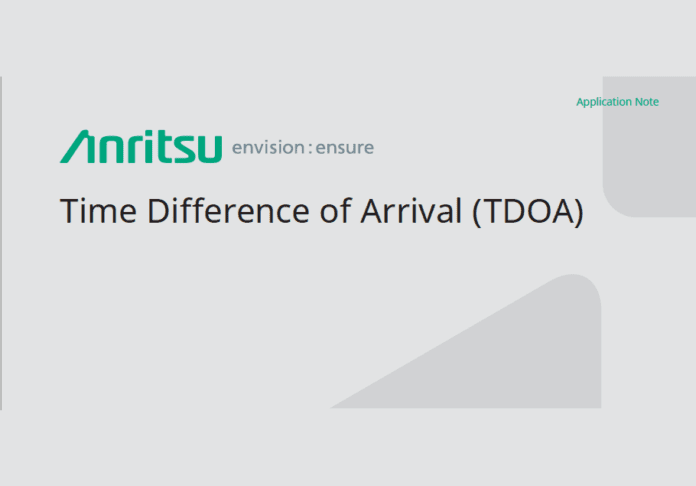Scroll down to view white paper
Time Difference of Arrival (TDOA) is a technique for geo-locating RF sources. It requires three or more remote receivers (probes) capable of detecting the signal of interest. Each probe is synchronized in time to capture corresponding I/Q data blocks. Software shifts the time signature of each I/Q data set to find the difference in the arrival time at each probe. This gives the difference in the distance of the source from each set of probes. Using several probes provides a set of curved lines that indicate solutions to the distance equations. The actual RF source sits at the intersection of these lines.
TDOA can provide a very accurate location estimate (< 100 m) in a short period of time. To successfully use
TDOA it is essential to understand the type of signals that can be used, how the results depend on the
geometry of the measurement (probe and source locations), what the sources of uncertainty are and how to mitigate them, and how to know if the answer is meaningful.
General Overview of a TDOA measurement
- A modulated signal is transmitted from an unknown source.
- The signal is captured at three or more probes at various locations around the source.
- The signal captured at each probe is shifted in time to find a position of maximum alignment.
- The time shift necessary to align each signal is multiplied by the speed of light to get a distance difference between each probe.
- The distance difference is plotted as a set of hyperbolic lines.
- The intersection of the lines indicates the location of the source
[pdf-embedder url=”https://www.rcrwireless.com/wp-content/uploads/2017/06/78a06980-cb97-4351-9baa-036b686b0aa5_Anritsu_Whitepaper_Time_Difference_of_Arrival_TDOA.pdf” title=”{78a06980-cb97-4351-9baa-036b686b0aa5}_Anritsu_Whitepaper_Time_Difference_of_Arrival_(TDOA)”]

